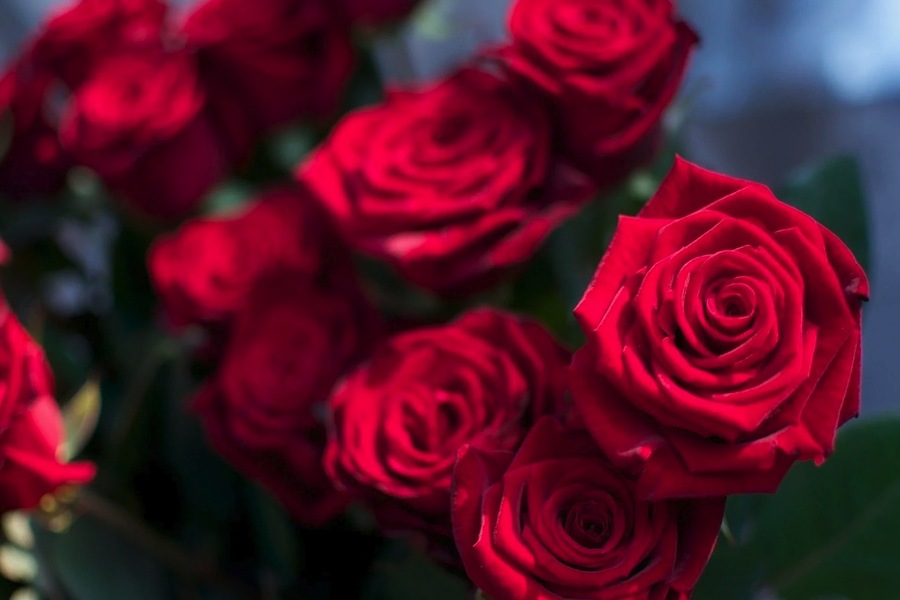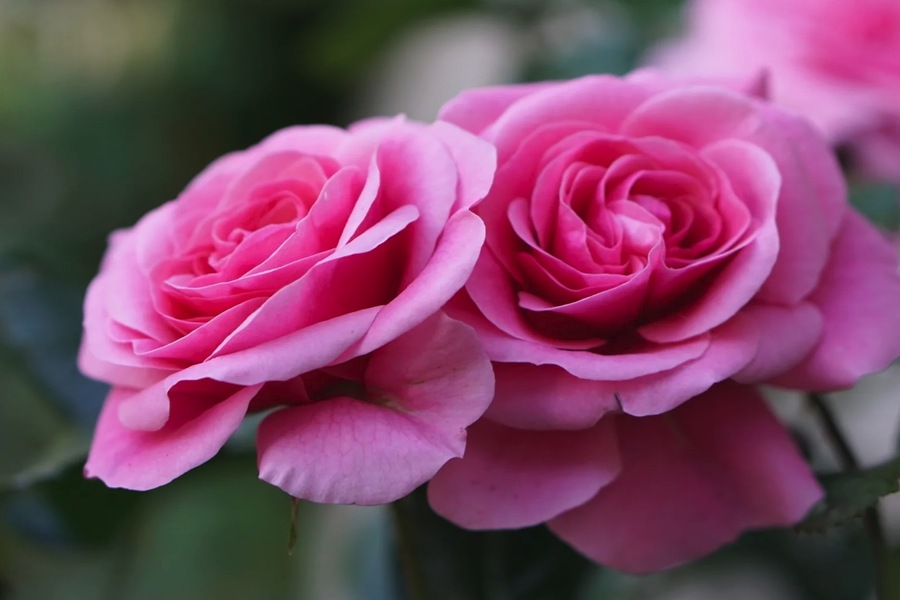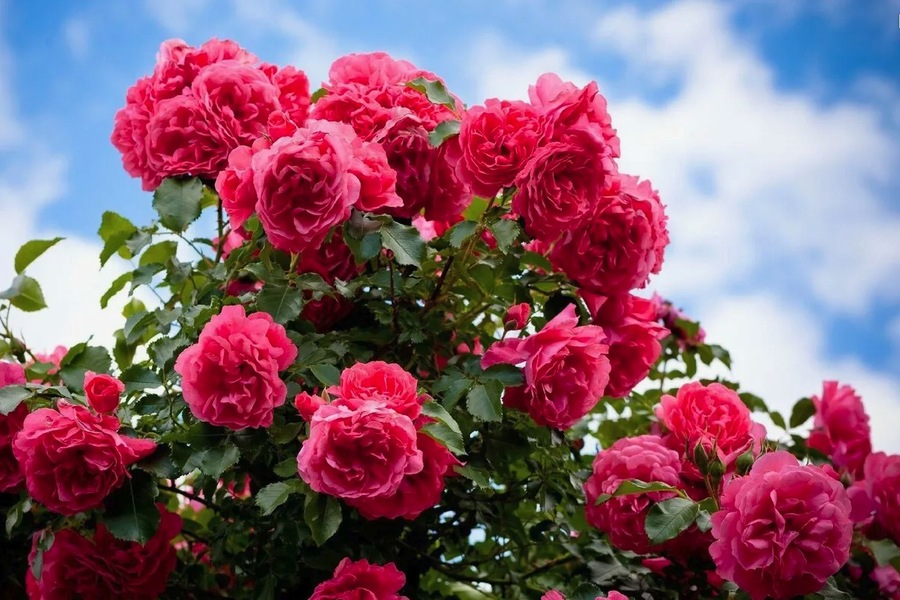Roses and flowers have long held a prominent place in world culture, embodying a wide array of meanings and emotions. Their rich symbolism can represent purity, virginity, life, and tranquility while simultaneously signifying passion, desire, grief, and mourning. This intricate tapestry of meanings has made roses a staple in the language of flowers, or floriography, which reached its zenith during the Victorian era. Even today, roses are not merely decorative gifts but bearers of secret messages for those who understand their language.
The Symbolism of Rose Colors
Red Roses
Red roses are the quintessential symbol of love and romance. They epitomize deep passion and devotion, making them the go-to choice for expressing heartfelt emotions. A single red rose can convey the message of “I love you,” while a bouquet amplifies the sentiment of deep, unwavering affection. The intensity of the red hue is often associated with the heat of true love, making it a powerful gesture of romantic intent.
Pink Roses
Pink roses exude grace, femininity, and tenderness. They are often given to express admiration and gratitude, making them perfect for thanking someone or celebrating a gentle, elegant presence. The soft hues of pink roses convey a message of delicate, sincere appreciation. Light pink roses typically indicate gentleness and joy, while darker shades express a deeper level of gratitude and recognition.
White Roses
White roses symbolize purity, innocence, and new beginnings. Commonly used at weddings, they represent the purity of a new union and the hope for a bright future. Additionally, white roses are a symbol of remembrance, often used to honor and remember loved ones who have passed away. Their serene and clean appearance evokes a sense of peace and reverence, making them a staple in both joyous and somber occasions.
Yellow Roses
Yellow roses are symbols of friendship, joy, and new beginnings. Their bright, cheerful color makes them ideal for celebrating joyous occasions and new ventures. However, in certain contexts, yellow roses can also represent jealousy and infidelity, adding a layer of complexity to their symbolism. The dual nature of yellow roses makes them a fascinating choice, capable of conveying both positive and cautionary messages depending on the context.
Orange Roses
Orange roses embody desire, enthusiasm, and excitement. They are often given to express feelings of enchantment or attraction, their vibrant hue symbolizing the burning passion and eagerness that one feels toward another. The fiery color of orange roses captures the essence of energy and fascination, making them perfect for conveying a sense of vibrant, dynamic affection.
Purple Roses
Purple roses are symbols of charm, mystery, and royalty. They are often used to express feelings of admiration and respect, their rich color evoking a sense of grandeur and enigmatic allure. The deep, velvety tones of purple roses can also suggest a magical or otherworldly quality, adding a touch of the extraordinary to their message.

The Significance of Rose Bouquets
The symbolism of roses is not only determined by their color but also by the number of flowers in a bouquet. Each combination conveys a different message, allowing for nuanced expressions of emotion:
– One Rose Bud: A single rose bud signifies love and devotion to one person. It is a simple yet powerful gesture of sincere and touching affection, often used to express a fresh or burgeoning romantic interest.
– Three Buds: Three rose buds symbolize respect. This small bouquet is versatile and suitable for a first date, a colleague, or a business partner. It is a polite and thoughtful way to show appreciation without overwhelming the recipient.
– Five Roses: Five roses convey sincerity and good wishes, making this bouquet a heartfelt gift for loved ones. It is perfect for occasions where genuine sentiments of well-wishing and kindness are to be communicated.
– Seven Rose Buds: Seven roses symbolize admiration. This bouquet can be presented as a compliment to a relative, friend, or colleague, expressing a sense of esteem and honor.
– Nine Roses: Nine roses are ideal for the woman you love, symbolizing strong and reliable relationships. This bouquet signifies deep, enduring love and is often used to celebrate significant milestones in a relationship.
– Eleven Roses: A bouquet of eleven roses indicates deep and reverent feelings, often a man’s way of confessing his profound affection. It suggests a commitment to honesty and integrity in the relationship.
– Fifteen Buds or More: Larger bouquets express strong love and serious intentions, symbolizing deep sympathy and passion. These grand gestures are reserved for conveying powerful emotions and are often used in romantic or solemn contexts.
Popular Rose Varieties for Bouquets
Several rose varieties are favored for their beauty, durability, and distinctive characteristics:
Freedom
Known for its durability, the Freedom rose features large, bright scarlet buds even on smaller stems, making it a popular choice for vibrant, long-lasting bouquets. The bold color and robust nature of these roses make them ideal for declarations of strong, unwavering affection.
Grand Prix
The Grand Prix rose boasts a cup-shaped, lush bud with neat petals and a deep red color. Its even and elegant appearance makes it a favorite for sophisticated arrangements. This variety is often chosen for its classic beauty and refined presentation.
Explorer
Explorer roses have larger buds than Freedom roses, with a darker shade of petals. They are celebrated for their durability, both in the flower and its leaves. The Explorer rose’s intense color and hardy nature make it a reliable choice for impactful floral displays.
Red Naomi
Among Russian producers, the Red Naomi is a favorite. Its buds can open up to an impressive 20 cm, showcasing a robust and striking red hue. This variety is known for its large, full blooms and is often used in dramatic, statement-making bouquets.
Ecstasy
Ecstasy roses are prized for their incredible aroma. While their buds are not particularly large, they are elegant and uniform, with a shade that can range from red to crimson. The captivating scent and striking color transitions make these roses a sensory delight.
Black Baccara
Favored by professional florists, Black Baccara roses have a terry, dark burgundy color, sometimes exhibiting a black tint. Their unique and dramatic appearance adds depth to any bouquet, making them a popular choice for those seeking to make a bold statement.
Mondial
Mondial roses feature tall, weighty, and lush buds, especially striking when fully opened. Their pure white color, without any transitional hues, makes them perfect for pristine, elegant arrangements. These roses are often chosen for their classic and timeless beauty.
Avalanche
Avalanche roses are known for their large, lush, and slightly disheveled buds. Their rich, full appearance adds a touch of natural beauty and elegance to any bouquet. The Avalanche rose’s slightly wild look makes it ideal for arrangements that aim to capture a sense of effortless charm.

The Cultural Impact of Roses
Roses have not only been significant in the realm of personal expression but have also played a crucial role in various cultural and historical contexts. In literature, roses have been a symbol of beauty, transience, and the complexities of love. From Shakespeare’s famous line “A rose by any other name would smell as sweet” to the use of roses in Persian poetry to symbolize the divine, the flower’s symbolism has permeated many aspects of human creativity.
In art, roses have been depicted in countless paintings, from the delicate, detailed still lifes of Dutch masters to the bold, vibrant interpretations of modern artists. These visual representations capture the rose’s multifaceted nature and its ability to evoke powerful emotions.
Historically, roses have been associated with royalty and political movements. The Wars of the Roses in England, a series of civil wars for control of the throne, were named after the symbols of the warring factions: the white rose of York and the red rose of Lancaster. This historical association underscores the rose’s enduring presence in human history and its capacity to symbolize power and conflict.
Conclusion
Roses, with their rich history and profound symbolism, continue to captivate hearts and convey deep emotions through their colors and arrangements. Whether expressing love, admiration, or friendship, the language of roses allows us to communicate our feelings in a timeless and beautiful manner. As we give and receive these enchanting flowers, we participate in a centuries-old tradition of conveying heartfelt messages through the subtle and eloquent language of floriography.

Biker, doer, guitarist, Eames fan and TDC honorary member. Performing at the fulcrum of art and computer science to craft meaningful ideas that endure. Let’s chat.
